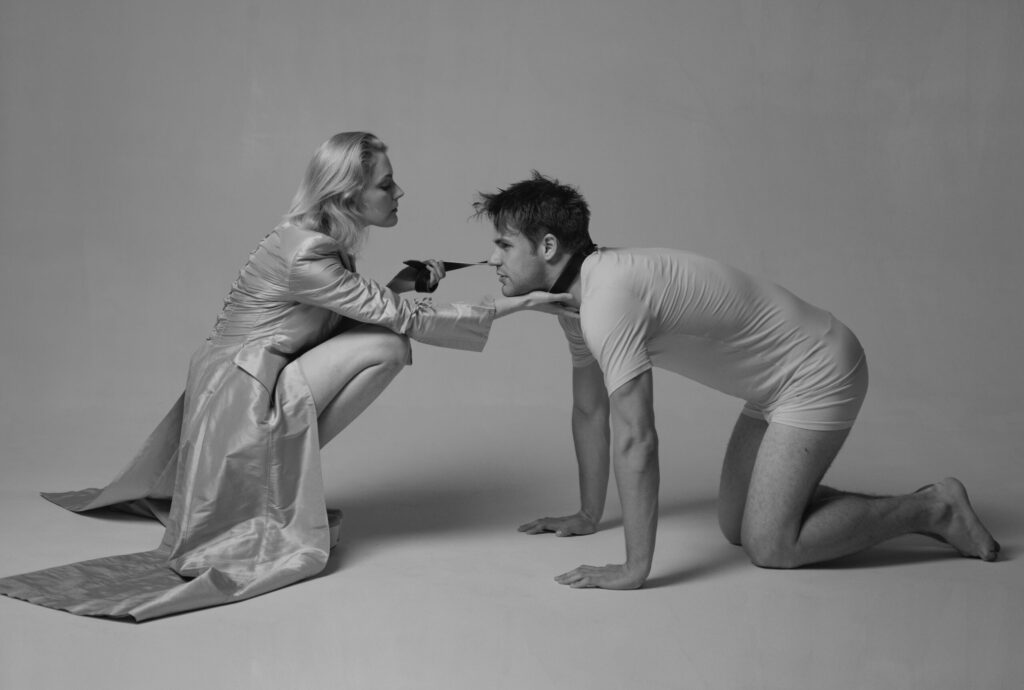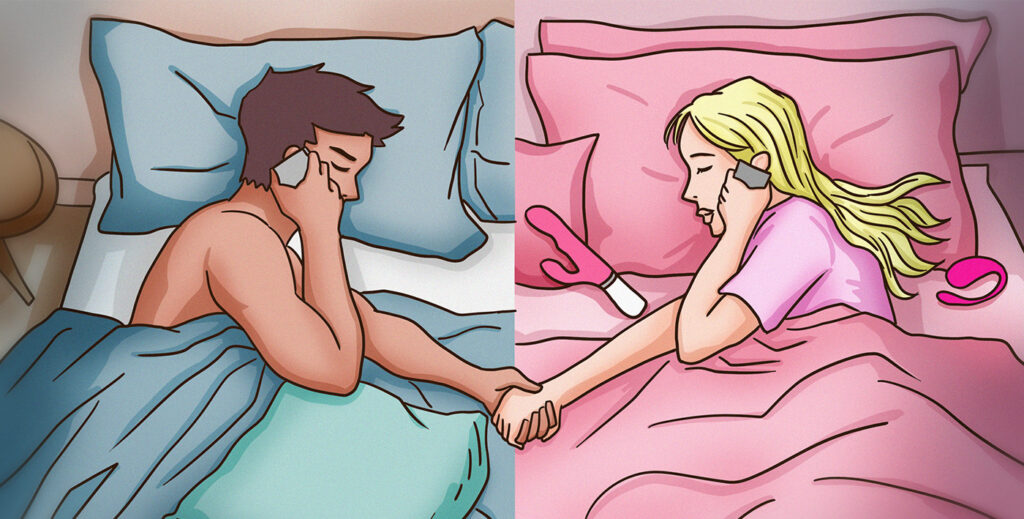
The Cuckold Lifestyle
The cuckold lifestyle, often shrouded in mystery and misunderstanding, has roots that trace back to ancient civilizations. But what does it mean today, especially in our evolving society? The term ‘cuckold’ might conjure images from medieval literature or perhaps incite feelings of confusion for some. But, like many other facets of human relationships, it’s a complex and deeply personal choice.
A Brief History and Its Evolution Over Time
Historically, the word ‘cuckold’ referred to a man who was unknowingly raising another man’s child, often seen as an object of scorn or mockery. But its modern usage, especially in the realm of relationships and kink, has taken on a different tone. Today, it often refers to a consensual fetish or lifestyle.
Did you know? The term ‘cuckold’ is derived from the cuckoo bird, known for laying its eggs in other birds’ nests!
Now, as we move forward, it’s essential to differentiate between the archaic and modern interpretations. Here’s a table to clarify:
| Era | Interpretation of ‘Cuckold’ | Common Perception |
|---|---|---|
| Medieval Times | Man unknowingly raising another’s child | Negative, mockery |
| Modern Day | Consensual fetish or lifestyle | Complex, personal choice |
Modern Interpretations and Variations
As we delve deeper into today’s world, we find that the cuckold lifestyle can take on various forms and intensities. It’s no longer just about the act itself but also the emotions, dynamics, and psychological aspects that come with it. Some enjoy it as a form of role play, while others embrace it as a full-time lifestyle.
But why do people gravitate towards it? What drives a person or couple to explore this dynamic? Is it purely sexual, or is there more beneath the surface? As we explore these questions, we’ll uncover that the cuckold lifestyle, like many other choices, is a mosaic of motivations and desires.
The Psychological Underpinnings Behind Cuckolding
Diving deep into the psychological intricacies of cuckolding provides a richer understanding of the lifestyle. What drives this particular fetish? Is it a manifestation of deeper psychological processes?
Power Dynamics and Control
At the heart of many BDSM-related fetishes, including cuckolding, lies the intricate dance of power and control. But unlike other BDSM practices, cuckolding often involves a third party, adding a unique layer of complexity.
- Dominance and Submission: The cuckold often takes on a submissive role, deriving pleasure from their partner’s actions with another person. This dynamic can be likened to other D/s relationships but has its unique spin.
- Humiliation and Empowerment: Some are drawn to cuckolding because of the humiliation aspect. It’s not about degradation, but rather a form of empowerment through vulnerability.
Evolutionary Perspective
From an evolutionary standpoint, there’s a theory called ‘sperm competition.’ This theory suggests that males are biologically wired to be aroused by the idea of their partner with another male, driving them to perform better sexually.
Quick Fact: Studies have shown that males who are exposed to stimuli related to cuckolding, such as imagining their partner with another man, can sometimes experience increased arousal and faster ejaculation.
However, we must tread lightly here. Using evolution to explain complex human behaviors can be reductive. Humans are not solely driven by biology; our choices are often a blend of nature and nurture.
The Thrill of the Taboo
Human beings are naturally drawn to what society deems forbidden. Cuckolding, being outside the norm of traditional monogamous relationships, carries with it a sense of the forbidden. This taboo nature can enhance the thrill and excitement for some, making it a sought-after experience.
Navigating the Emotional Landscape of Cuckolding
While cuckolding is undoubtedly a physical experience, it is also deeply emotional. It’s crucial for participants to navigate these waters with care and understanding.
Communication is Key
Open dialogue can’t be stressed enough. It’s the bedrock of any successful cuckolding experience. All parties involved should:
- Set boundaries: Clearly define what is and isn’t acceptable.
- Check in regularly: Emotions can change. Regular check-ins ensure everyone is still on the same page.
- Seek external support if needed: Sometimes, a counselor or therapist specializing in alternative lifestyles can provide invaluable guidance.
Understanding Jealousy
It’s natural to feel jealous, but in the cuckolding world, this emotion can be transformed into something erotic. By confronting and embracing this jealousy, many find a heightened sense of arousal. However, if jealousy becomes destructive, it may be time to reassess the situation.

Society’s Perception and Acceptance of Cuckolding
While cuckolding as a fetish has been around for a while, its perception in society has evolved over time. How does the world view cuckolding, and what are the misconceptions tied to it?
The Media’s Representation
Media, especially in Western cultures, often portrays cuckolding in a light of mockery or misunderstanding. This can lead to:
- Misconceptions about consent: Cuckolding is a consensual act between all parties involved. It’s not about cheating or betrayal.
- Stereotyping participants: People involved in cuckolding come from various backgrounds and have diverse reasons for their interests. It’s essential to avoid painting everyone with the same brush.
Acceptance in Alternative Communities
Cuckolding, while still considered a niche fetish, finds more acceptance in alternative and BDSM communities. Here, emphasis is placed on communication, consent, and mutual respect. Within these circles, there’s a better understanding of the emotional depth and connection cuckolding can foster between partners.
The Stigma of Masculinity
Central to cuckolding is the play on masculinity. This can be empowering for some but may also lead to misunderstandings. Many believe that a male cuckold is “less of a man,” a perception deeply rooted in societal constructs of masculinity.
| Societal Constructs | Reality |
|---|---|
| Dominance is key to masculinity. | Many find strength in submission. |
| Jealousy is a sign of love. | Some transform jealousy into erotic pleasure. |
| Real men don’t share. | Sharing can enhance intimacy and trust. |
The Safe Practice of Cuckolding
Engaging in any alternative lifestyle requires a profound understanding of safety, both emotional and physical.
Emotional Safety
- Aftercare: Like any intense experience, cuckolding can leave participants feeling vulnerable. Aftercare, involving communication and comfort, is vital.
- Understanding Limitations: Everyone has boundaries. It’s essential to recognize and respect them.
Physical Safety
When introducing a third party, physical safety becomes paramount.
- Regular Health Check-ups: Ensuring all participants are healthy reduces risks.
- Safe Words: Especially if the experience involves BDSM elements, having a word to halt proceedings is crucial.
Digital Safety
For those exploring cuckolding online, ensuring digital privacy is vital. From using encrypted platforms to being cautious about sharing personal information, being safe online is as crucial as offline safety.
The Psychological Aspects of Cuckolding
Understanding the psyche behind why some individuals are attracted to cuckolding can shed light on its increasing popularity in certain circles.
The Thrill of Taboo
For many, the allure of cuckolding lies in its taboo nature. Societal norms often dictate monogamy as the default relationship structure, making cuckolding an exciting divergence for some.
- Breaking Conventions: Engaging in acts society deems “forbidden” can offer an adrenaline rush.
- Exploring Hidden Desires: Cuckolding provides an avenue to delve deep into suppressed fantasies.
Power Dynamics and Control
Cuckolding, especially when intertwined with BDSM elements, plays heavily on power dynamics.
- Reclaiming Power: The cuckolded individual might find pleasure in relinquishing control, only to reclaim it later.
- Dominance and Submission: The dynamic between the ‘bull’ and the cuckold can be a dance of dominance and submission.
Evolutionary Perspective
Some theories propose an evolutionary basis for cuckolding.
“The idea is that seeing, or knowing, a partner with someone else will ignite a competitive fire in the cuckolded party, making them more inclined to better their performance, ensuring their genetics are passed on.”
However, it’s essential to approach these theories with a grain of salt, as human sexuality is multifaceted and not solely driven by evolutionary needs.
Dispelling Common Myths
With any misunderstood topic, myths abound. Dispelling these can pave the way for better understanding and acceptance.
It’s Just Physical
While the act might seem physical, cuckolding often involves deep emotional connections and trust between partners.
It’s Degrading
Contrary to popular belief, cuckolding doesn’t inherently degrade any participant. Like any kink, it’s about mutual respect and understanding boundaries.
It Leads to Relationship Issues
Any relationship can face issues, but cuckolding, when practiced with open communication, can actually enhance intimacy between partners.
Table: Common Myths vs. Reality
| Myths | Reality |
|---|---|
| Cuckolding is purely physical. | It can enhance emotional intimacy. |
| It’s a degrading practice. | Mutual respect is paramount. |
| It’s a recipe for relationship disaster. | With good communication, it can be the opposite. |
Final Thoughts
Cuckolding, like any other kink or fetish, requires understanding, respect, and open-mindedness. By shedding preconceived notions and approaching it with empathy, we can better appreciate the complexities of human sexuality. Whether or not cuckolding is for you, understanding it can broaden horizons and foster a more accepting society.



